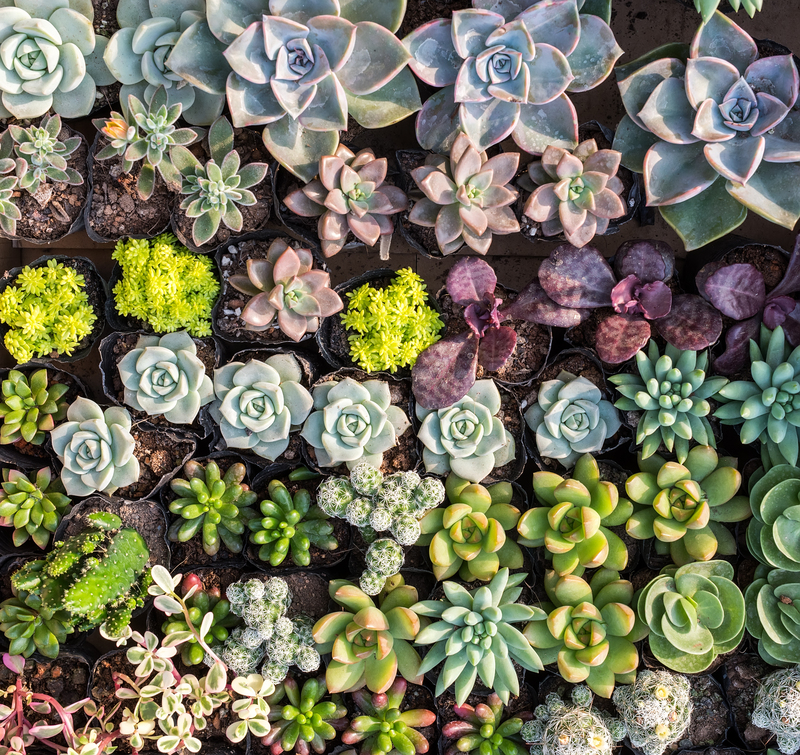Master the Art of Orchid Care
Posted on 23/09/2025
Master the Art of Orchid Care: A Comprehensive Guide
Orchids have long been adored by plant enthusiasts and hobbyists for their ethereal beauty, unique flowers, and remarkable diversity. However, these exotic plants also carry a reputation for being challenging to maintain. The truth is, with a solid understanding of orchid maintenance, anyone can nurture and master the art of orchid care right at home. This in-depth guide will help you unlock the secrets of orchid health, from choosing the right species to troubleshooting common issues, so you can enjoy stunning blooms year after year.

Understanding Orchids: A World of Diversity
To become an orchid expert, it's essential to start with the basics. Orchids (family Orchidaceae) form one of the largest plant families on Earth, boasting over 25,000 species and tens of thousands of hybrids. They can thrive in diverse environments, from tropical rainforests to arid deserts. However, most commonly cultivated orchids hail from humid, forested regions, especially in Asia and South America.
- Moth Orchid (Phalaenopsis): Easy-care and popular, ideal for beginners.
- Cattleya: Known for their fragrance and large, flamboyant blooms.
- Dendrobium: Hardy, with tall stems and delicate flowers.
- Oncidium: Nicknamed "dancing lady" for their lively blooms.
- Vanda: Spectacular and often fragrant, ideal for experienced growers.
Why Mastering Orchid Care is Worthwhile
Orchids offer unparalleled rewards to those willing to learn how to care for them. Their blooms can last for months, and with the right care, many orchids will rebloom annually--sometimes even more!
Choosing the Right Orchid for You
Your journey in orchid cultivation begins with picking a species that matches your environment and skill level.
Factors to Consider
- Light requirements
- Temperature tolerance
- Humidity preferences
- Available care time
- Blooming season and duration
Phalaenopsis orchids are widely regarded as the best orchids for beginners due to their forgiving nature and adaptability. If you're new to orchid plant care, starting with one of these can help build your confidence and skills.
Essential Elements of Proper Orchid Care
Now, let's dive into the core components of raising healthy orchids. These steps are key for anyone aiming to master orchid care.
1. Light: Balancing Brightness
Orchids typically thrive in bright, indirect light. Too much direct sunlight can scorch their leaves, while too little causes weak growth and lack of flowering. To optimize light exposure:
- Place orchids near an east- or west-facing window with filtered sunlight.
- If necessary, use a sheer curtain to diffuse harsh light.
- For homes with limited natural light, consider grow lights. LEDs are efficient and mimic sunlight well.
Leaf color is an excellent indicator of proper lighting. Healthy orchid leaves should be light to medium green. Very dark green indicates insufficient light, while yellowish or reddish tints suggest too much exposure.
2. Watering: Consistency is Key
Orchids require a careful balance when it comes to watering. Overwatering is the most common mistake, leading to root rot. The general rule is:
- Water only when the potting mix feels dry to the touch, but before it becomes bone dry.
- Use lukewarm water and avoid leaving the plant standing in excess water.
- Water in the morning, allowing leaves and roots to dry by nightfall.
A good test is to stick your finger about two inches into the growing medium. If it feels dry, it's time to water. With mastering orchid plant care, less is often more!
3. Humidity: Recreating the Rainforest
Most standard orchids prefer humidity levels between 40% and 70%. To achieve this indoors:
- Group orchids together to increase local humidity.
- Set pots atop trays filled with pebbles and water (but keep roots above waterline).
- Use a room humidifier, particularly during dry winter months.
- Mist the air (not flowers) lightly, but avoid over-wetting.
Consistent humidity is crucial for happy, healthy orchids capable of producing resplendent blooms.
4. Temperature: Keeping Conditions Comfortable
Since most cultivated orchids originate from tropical or subtropical zones, they prefer:
- Daytime: 70-85?F (21-29?C)
- Nighttime: 60-70?F (15-21?C)
Small temperature drops at night promote flower spike development. Never expose orchids to freezing drafts or sudden temperature shifts--they are sensitive to stress!
5. Airflow: The Secret Ingredient
Proper ventilation mimics the breezy, open habitat of wild orchids and helps prevent fungal and bacterial diseases. Achieve optimal airflow by:
- Using a small oscillating fan (on low and not pointed directly at plants)
- Leaving space between pots
- Avoiding crowded, stagnant environments
Good airflow ensures robust growth and helps your orchids stay free of pests and mildew.
6. Potting Mix and Containers
Orchids require a unique potting medium that offers excellent drainage and air circulation. Never use standard potting soil. Instead, use:
- Bark chips (fir or pine)
- Sphagnum moss
- Perlite
- Coconut husk
- Charcoal (for odor and moisture control)
Choose a clear plastic orchid pot with drainage holes. This allows for monitoring root health and maximizes light penetration to the roots, which some species love.
Feeding Your Orchid: Fertilizer Tips
To truly excel at orchid care, you need to feed your orchids wisely. Use a balanced, water-soluble orchid fertilizer (20-20-20) and avoid over-fertilizing--a little goes a long way.
- Feed lightly every 2-4 weeks during active growth (spring and summer).
- Reduce fertilizing in winter when growth slows.
- Flush the potting mix with plain water every month to prevent salt build-up.
Follow the fertilizer manufacturer's guidelines, and remember: dilute more than you think--half-strength is usually best!
Pruning, Repotting, and General Maintenance
Pruning Spent Flower Spikes
- After blooms drop, trim the flower spike just above a visible node or the base, depending on the species.
- Use sterile scissors or pruning shears to avoid disease.
This often encourages new growth and prepares your orchid for its next blooming cycle, an essential part of successful orchid maintenance.
Repotting Orchids
Repot every 1-2 years, preferably after blooming or when you notice:
- Roots growing out of pots
- Spongy, decomposed potting mix
- Visible pests or diseases
Gently shake off old medium, inspect and trim damaged roots, place in fresh mix, and keep slightly drier for a week or two to help roots adapt.
Troubleshooting Common Orchid Problems
- Yellow leaves: Often a sign of overwatering or excess direct sunlight.
- Wrinkled leaves: Usually indicate underwatering or root damage.
- Buds dropping before opening: Caused by inconsistent watering, drafts, or sudden temperature changes.
- Pests: Watch for mealybugs, scale, and aphids. Wipe leaves with a soapy water solution or use insecticidal spray as needed.
- Fungal infections: Usually occur in poorly ventilated or overly wet environments. Improve airflow and reduce humidity.
Orchid mastery means responding promptly to issues and adapting your care routine.
Encouraging Rebloom: Unlocking Beautiful Blooms
After their first enchanting flowers fade, many growers wonder: How do I make my orchid bloom again? The answer lies in providing optimal care and triggering blooming cues:
- Provide a slight nighttime temperature drop (about 10?F lower than daytime).
- Reduce watering slightly for a few weeks after flowering.
- Increase humidity and light exposure to boost growth.
- Be patient--some orchids rest after blooming before putting out new spikes.
With a bit of patience and knowledge, you can enjoy an orchid rebloom that rivals your first!

Expert Tips to Truly Master Orchid Care
- Observe your orchid regularly. Notice changes in foliage, roots, and flowers to catch problems early.
- Keep care consistent. Orchids thrive on routine; sudden changes can halt blooms.
- Record-keeping. Note when you water, fertilize, and when your orchid blooms to fine-tune your care over time.
- Join a local orchid society. Learning from experienced growers and sharing your successes accelerates your expertise.
- Be patient. Orchids are resilient, but all good things take time!
Conclusion: Become an Orchid Care Pro
Mastering orchid care is a journey--one that blends science, patience, and a dash of artistry. By understanding your orchid's natural habitat, providing appropriate light, water, and nutrition, and addressing issues promptly, you'll transform your home into a miniature paradise of breathtaking blooms. Whether you're nurturing your first orchid houseplant or expanding a collection, these guidelines will ensure you grow stunning, healthy orchids with confidence and joy.
Unlock the full potential of these fabulous flowers. Now is the perfect time to master the art of orchid care and experience their unparalleled beauty in your living space!
Ready to Cultivate Your Orchid Success?
- Start simple. Choose an easy-care orchid variety
- Follow a consistent care routine.
- Observe, experiment, and enjoy. Every orchid teaches valuable lessons with each new bloom!
Your journey to becoming an orchid expert begins today!

